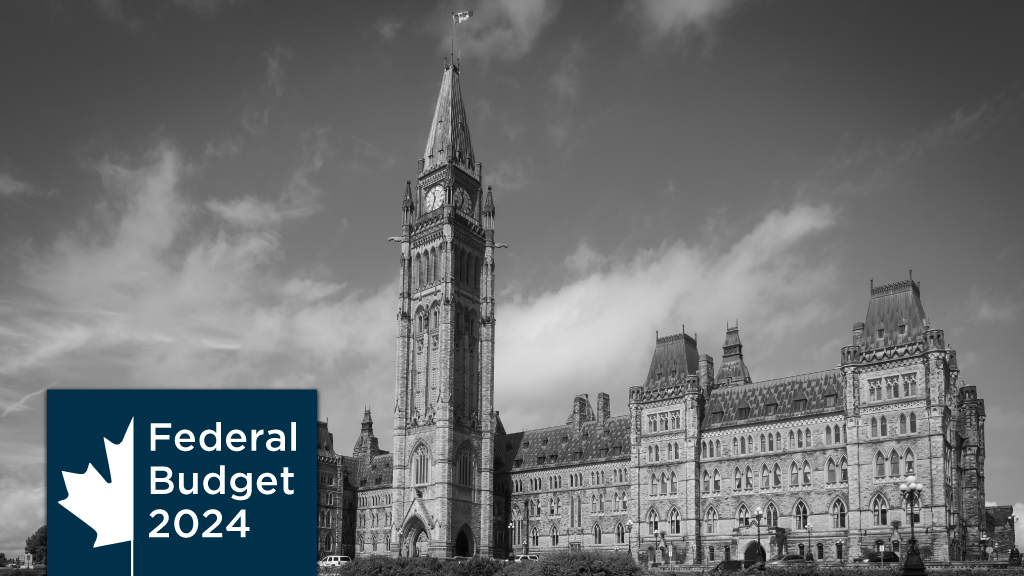Despite providing new spending to build houses, the 2024 federal budget fails to address some fundamental issues for construction, stated Ontario industry stakeholders.
Unveiled by Finance Minister and Deputy Prime Minister Chrystia Freeland April 16, Budget 2024 and ║┌┴╧│╘╣╧═ЇтАЩs Housing Plan lay out the governmentтАЩs strategy to unlock 3.87 million new homes by 2031, which includes a minimum of two million net new homes on top of the 1.87 million homes expected to be built anyway by 2031.
The budget doesnтАЩt deal with some of the immediate problems the country has, which is people canтАЩt afford housing, said Richard Lyall, president of the Residential Construction Council of Ontario (RESCON).
тАЬI think there is some considerable gaslighting going on right now. IтАЩm not seeing much of a budget for young people there. The thing that still concerns me is that first-time homebuyers, younger families are still out of the market. While this budget did have the Capital Cost Allowance for apartment buildings, some extra financing money for purpose-built rentals thatтАЩs good, we needed that, but weтАЩre still not really getting at some of the bigger issues that we have.тАЭ
Ian Cunningham, president of the Council of Ontario Construction Associations, agreed the budget missed the mark.
тАЬWhile thereтАЩs lots in the budget to support the construction of affordable housing and infrastructure that our industry can be pleased with, it fails to address the fundamental underlying economic crisis that has plagued our economy for decades, that challenges our standard of living and the prosperity of future generations, ║┌┴╧│╘╣╧═ЇтАЩs lagging productivity,тАЭ said Cunningham. тАЬI had hopes for something better in this regard.тАЭ
Tax incentives only go so far
Overall, the Ontario General Contractors Association (OGCA) was hoping for more of a commitment from the feds towards the inclusion and expansion of targeted spending on infrastructure instead of simply offering tax incentives, said OGCA president Giovanni Cautillo.
тАЬAlthough the federal government is providing additional attention to the residential market, specifically housing, the OGCA would have liked to see more done for infrastructure spending and supporting individual provinces around incentivizing infrastructure projects through possible federal matching incentives,тАЭ he said in an email to the Daily Commercial News. тАЬAlthough tax incentives were offered in Clean Hydrogen, Clean Manufacturing and Clean Electricity, the OGCA believes that a further monetized investment into the Canadian Infrastructure Bank would have yielded more return for the average Canadians through expanded employment by way of additional projects. Tax incentives are great, but only really benefit a small percentage of Canadians.тАЭ
Boosting the rental housing sector
The government said the budget focuses on тАЬnew measures to make the math work for homebuilders.тАЭ
One of the supply side initiatives include introducing a temporary Accelerated Capital Cost Allowance for apartments that will increase the capital cost allowance rate from four per cent to 10 per cent on new purpose-built rental projects.
тАЬThe acceleration of the capital cost allowance in the federal governmentтАЩs new housing plan is positive and represents a significant boost to the rental housing sector that will incentivize more units being built,тАЭ said Nadia Todorova, executive director of the Residential and Civil Construction Alliance of Ontario (RCCAO), in a statement.
She added, тАЬLeveraging ║┌┴╧│╘╣╧═ЇтАЩs immigration system to expand workforce capacity to build housing, linking transit infrastructure dollars to permitting greater density in urban areas, and reducing municipal red tape to fast-track home construction are long overdue reforms.тАЭ
Skilled trades and apprenticeship initiatives
The Provincial Building and Construction Trades Council of Ontario appreciated the continued investments in skilled trades training and apprenticeship, said business manager Marc Arsenault.
тАЬContinued investment in the clean energy sector through the Clean Investment Tax Credit тАУ which includes nuclear тАУ is important,тАЭ he stated. тАЬHowever, any such type of investment, be it for clean energy or through new items like the Electric Vehicle (EV) Supply Chain investment tax credit, must be tied to fair labour requirements that include prevailing wages, hiring local workers and creating opportunities for apprentices. Without those things, Canadian tax dollars stand to be invested in companies without maximizing benefits to Canadians.тАЭ┬а
To address the labour shortage and get more people to pursue construction as a career, the budget will provide $100 million over two years to Employment and Social Development ║┌┴╧│╘╣╧═Ї, which includes $90 million over two years for the Apprenticeship Service to help create placements with small and medium-sized enterprises for apprentices. In addition, $10 million is being allocated over two years for the Skilled Trades Awareness and Readiness Program.
However, Lyall said┬аpeople are being laid off in the low-rise sector in the central Ontario region right now.
тАЬWe have hundreds of framers sitting at home,тАЭ he explained. тАЬI talk to contractors in the new low-rise homebuilding business and the pipeline of new business is bone dry. There is nothing coming in and not many new projects have been started this year.тАЭ
The budget also proposes to provide $50 million over two years, starting in 2024-25, to Employment and Social Development ║┌┴╧│╘╣╧═Ї for the Foreign Credential Recognition Program. The funding builds on Budget 2022тАЩs five-year $115 million investment.
Making an impact
Karen Renkema, vice-president, Ontario with the Progressive Contractors Association of ║┌┴╧│╘╣╧═Ї, said she is pleased the government is ending its impact assessment on Highway 413.
тАЬHowever more focus is needed to break down regulatory barriers to expedite natural resource and infrastructure projects in Ontario,тАЭ she said. тАЬWhile an update of the Impact Assessment Act is needed, nothing short of a complete overhaul will do to ensure there is less political interference in the approvals of major projects that Ontarians and Canadians rely on.тАЭ
The OGCA also said while it welcomed the Cutting Red Tape to Boost Innovation initiative, it is concerned about the lack of information on how it will work.
тАЬThe government announced that they intend to introduce amendments to the Red Tape Reduction Act to broaden the use of regulatory sandboxes across government,тАЭ Cautillo said. тАЬWithout the requisite clarity in the overall delivery of this proposal, it will not bolster the confidence in the industry.тАЭ
Follow the author on X/Twitter .












Recent Comments
comments for this post are closed